Aikido vs Brazilian Jiu Jitsu – Exploring the Differences and Similarities
Table of Contents:
- Introduction
- History and Origins
- Philosophies and Principles
- Techniques and Training Methods
- Belt Ranking Systems
- Self-Defense and Real-World Application
- Competition and Sport
- Mental and Physical Benefits
- Conclusion
1. Introduction
When it comes to martial arts, two disciplines that often pique interest and spark debates are Aikido and Brazilian Jiu Jitsu (BJJ). Both arts have distinct origins, philosophies, and techniques, making them unique in their own right. In this comprehensive guide, we’ll delve into the intricacies of Aikido and BJJ, comparing and contrasting their key aspects to help you gain a deeper understanding of these fascinating martial arts.
2. History and Origins
Aikido, founded by Morihei Ueshiba in Japan in the early 20th century, draws influences from various traditional Japanese martial arts, including Jujutsu and Kenjutsu. The art emphasizes harmony, blending, and redirecting an opponent’s energy rather than meeting force with force. On the other hand, Brazilian Jiu Jitsu originated in Brazil in the early 20th century, developed by the Gracie family. It evolved from Japanese Jiu Jitsu and focuses primarily on ground fighting and submission grappling techniques. To get more information about “Brazilian Jiu Jitsu” you can check out this article Brazilian Jiu Jitsu.
3. Philosophies and Principles
Aikido’s philosophy revolves around non-violence, self-improvement, and spiritual development. Practitioners seek to neutralize aggression without causing harm, using techniques that emphasize fluidity and control. In contrast, BJJ’s philosophy is pragmatic, focusing on practical self-defense and combat effectiveness. The art emphasizes leverage, technique, and positional dominance to overcome opponents, especially in ground-based scenarios.
4. Techniques and Training Methods
Aikido techniques include joint locks, throws, and pins, with an emphasis on blending with an opponent’s movements and redirecting their energy. Training often involves paired practice (randori) and kata (pre-arranged forms). BJJ techniques revolve around positional control, submissions, sweeps, and escapes, with training predominantly conducted on the ground. Sparring (rolling) is a crucial component of BJJ training, allowing practitioners to test techniques against resisting opponents. For insights into “Brazilian jiu jitsu theory and technique,” you can explore this article Brazilian jiu jitsu theory and technique.
5. Belt Ranking Systems
Both Aikido and BJJ employ belt ranking systems to signify a practitioner’s skill level and progress. Aikido typically uses a system of kyu (student ranks) and dan (black belt ranks), while BJJ utilizes a similar structure, albeit with different belt colors. Belt promotions in both arts are based on technical proficiency, knowledge, and time invested in training. Additionally, Bravo BJJ offers BJJ Belts at a discount price.
6. Self-Defense and Real-World Application
Aikido and BJJ offer effective self-defense techniques, albeit with different approaches. Aikido focuses on redirecting an attacker’s energy and neutralizing aggression without causing harm. Its techniques are often applied in standing confrontations, emphasizing throws and joint locks. BJJ, on the other hand, excels in ground-based self-defense scenarios, where practitioners utilize leverage, control, and submissions to overcome larger or stronger opponents.
7. Competition and Sport
While both Aikido and BJJ have competitive aspects, their approaches to competition differ significantly. Aikido competitions are rare and often non-competitive, emphasizing cooperation, technique, and form. In contrast, BJJ has a thriving competitive scene, with tournaments held worldwide at various skill levels. BJJ competitions feature live grappling matches where practitioners vie for dominant positions and submission victories.
8. Mental and Physical Benefits
Both Aikido and BJJ offer numerous mental and physical benefits to practitioners. Aikido promotes mental discipline, focus, and mindfulness, fostering a sense of harmony and balance. Physically, Aikido enhances flexibility, coordination, and body awareness. BJJ develops mental toughness, problem-solving skills, and resilience, as practitioners navigate complex grappling exchanges. Physically, BJJ improves strength, endurance, and cardiovascular health.
To get more information about “Brazilian Jiu Jitsu vs Judo,” you can check out this article Brazilian Jiu Jitsu vs Judo. For insights on “Brazilian Jiu Jitsu vs Taekwondo,” take a look at this article Brazilian Jiu Jitsu vs karate vs Taekwondo. Additionally, if you’re interested in “Wing Chun vs Brazilian Jiu Jitsu,” you can explore more in this article Wing Chun vs Brazilian Jiu Jitsu.
9. Conclusion
In conclusion, Aikido and Brazilian Jiu Jitsu are two distinct martial arts with rich histories, philosophies, and techniques. While Aikido emphasizes harmony, redirection, and non-violence, BJJ focuses on ground fighting, leverage, and submission grappling. Whether you’re drawn to the spiritual aspects of Aikido or the practicality of BJJ, both arts offer valuable lessons in self-defense, personal growth, and holistic well-being. Ultimately, the choice between Aikido and BJJ depends on individual preferences, goals, and interests, but exploring both arts can provide a well-rounded martial arts experience.
Frequently Asked Questions (FAQs)
Q1. What are the main differences between Aikido and Brazilian Jiu Jitsu?
A: Aikido focuses on redirecting an opponent’s energy and emphasizes throws, joint locks, and strikes, whereas Brazilian Jiu Jitsu emphasizes ground fighting and submission grappling techniques.
Q2. Which martial art is better for self-defense: Aikido or Brazilian Jiu Jitsu?
A: Both Aikido and Brazilian Jiu Jitsu offer effective self-defense techniques, but their approaches differ. Aikido is suitable for standing confrontations and emphasizes non-violent resolution, while Brazilian Jiu Jitsu excels in ground-based scenarios, utilizing leverage and control to overcome opponents.
Q3. How do the philosophies of Aikido and Brazilian Jiu Jitsu differ?
A: Aikido’s philosophy revolves around harmony, non-violence, and spiritual development, while Brazilian Jiu Jitsu’s philosophy is pragmatic, focusing on practical self-defense and combat effectiveness.
Q4. What is the training like for Aikido and Brazilian Jiu Jitsu?
A: Aikido training often involves paired practice (randori) and pre-arranged forms (kata), emphasizing fluidity and control. Brazilian Jiu Jitsu training focuses on positional control, submissions, and live grappling (rolling), predominantly conducted on the ground.
Q5. Are there competitive aspects to Aikido and Brazilian Jiu Jitsu?
A: Aikido competitions are rare and often non-competitive, emphasizing cooperation, technique, and form. In contrast, Brazilian Jiu Jitsu has a thriving competitive scene with tournaments worldwide, featuring live grappling matches where practitioners vie for dominant positions and submissions.
Q6. How do the belt ranking systems differ between Aikido and Brazilian Jiu Jitsu?
A: Aikido typically uses a system of kyu (student ranks) and dan (black belt ranks), while Brazilian Jiu Jitsu employs a similar structure with different belt colors. Belt promotions in both arts are based on technical proficiency, knowledge, and time invested in training.
Q7. What are the mental and physical benefits of practicing Aikido and Brazilian Jiu Jitsu?
A: Aikido promotes mental discipline, focus, and mindfulness, along with enhanced flexibility, coordination, and body awareness. Brazilian Jiu Jitsu develops mental toughness, problem-solving skills, and resilience, while improving strength, endurance, and cardiovascular health.
Q8. Which martial art should I choose: Aikido or Brazilian Jiu Jitsu?
A: The choice between Aikido and Brazilian Jiu Jitsu depends on individual preferences, goals, and interests. If you’re drawn to spiritual development and non-violent conflict resolution, Aikido may be a better fit. If you’re interested in practical self-defense and competitive grappling, Brazilian Jiu Jitsu may be more suitable. Ultimately, exploring both arts can provide a well-rounded martial arts experience.







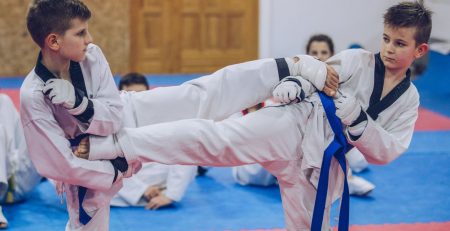

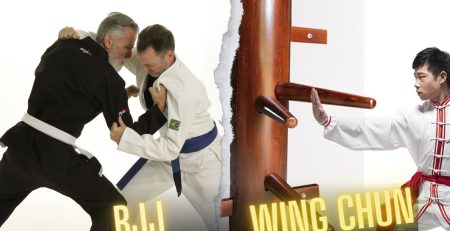

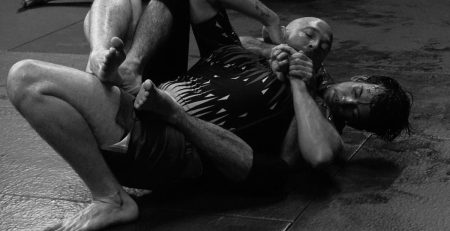
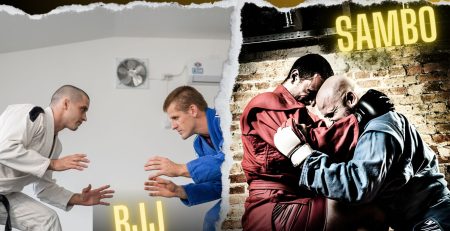
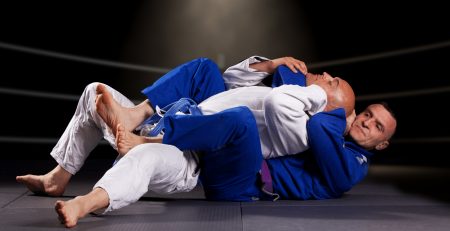

Leave a Reply
You must be logged in to post a comment.